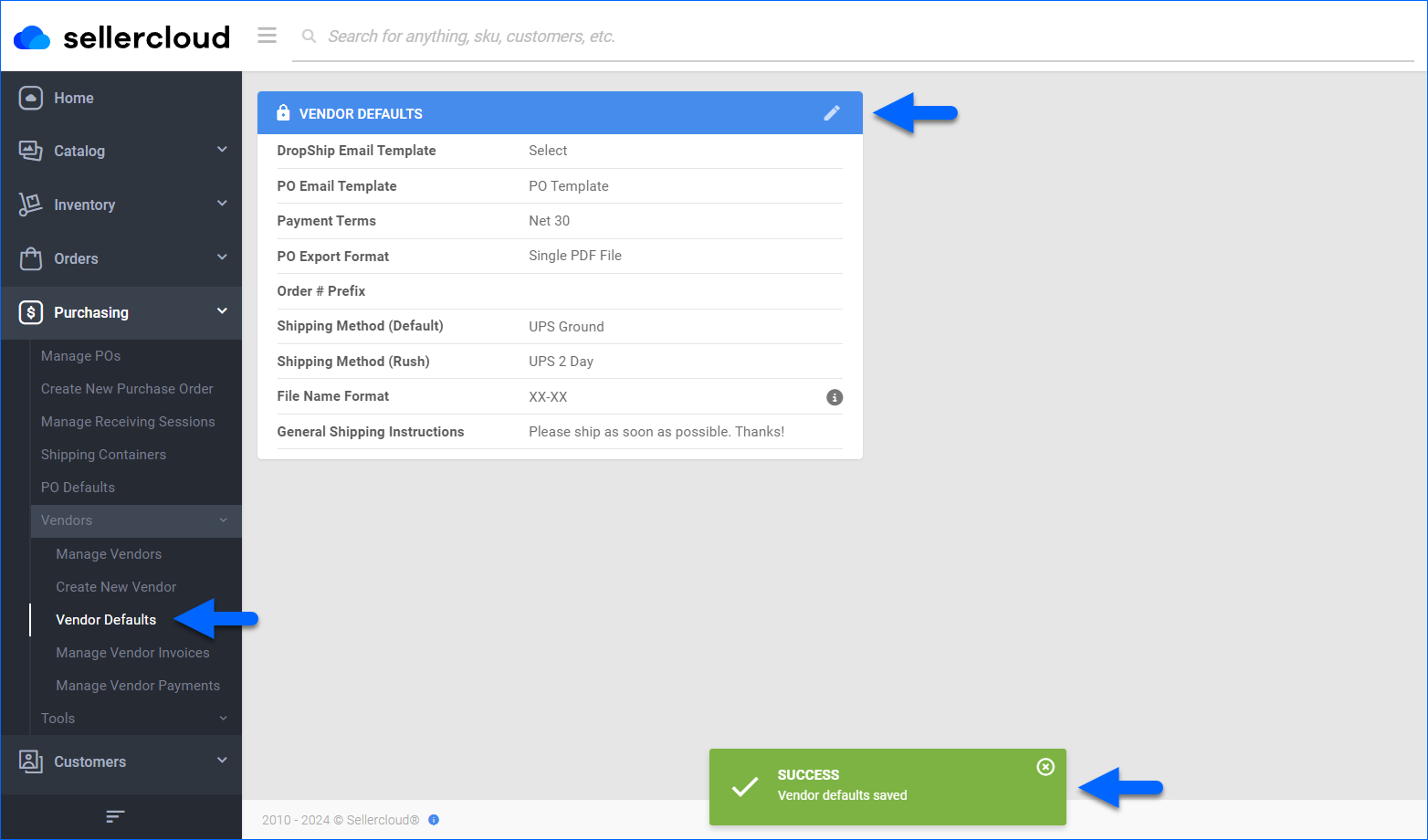Overview
The Vendor Defaults page in Sellercloud streamlines vendor management by allowing you to predefine certain settings and actions for all your vendors. By automating key processes and customizing your workflow, you can not only save valuable time but also enhance overall efficiency.
Vendor Defaults
To set default information and actions for vendors:
- Go to Purchasing > Vendors > Vendor Defaults.

- Click the Pencil icon and update the following options:
- DropShip Email Template – Set a pre-defined email template for your dropship orders.
- Payment Terms – Set the default payment terms for when you create a new vendor.
- PO Export Format – Set the default purchase order export file format used when you export a PO to a vendor.
- Order # Prefix – Add a prefix to all purchase orders to any vendor.
- Shipping Method (Default) – The default preferred shipping method.
- Shipping Method (Rush) – The default preferred rush method.
- File Name Format – Entering poid populates the filename with the PO#. Use yyyy-MM-dd to populate the filename with the date of file creation. For example, enter the filename as follows: poid-yyyy-MM-dd.
- General Shipping Instructions – The default shipping instructions the vendor sees when you send a purchase order.